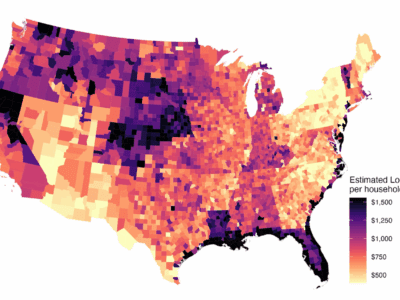Wildfire Liability in California: A Primer
California has a unique approach to lawsuits against utilities for causing fires.
The fires in L.A. have put litigation over wildfires on the front page and spotlighted California’s unique approach. But such litigation isn’t new. In 2019, Pacific Gas & Electric filed for bankruptcy because of billions of dollars of potential liability from fires the previous summer. The firm was faced with 750 lawsuits, ultimately entering a $13.5 billion settlement. Lawsuits in other states have ranged into the $100 million range and above, but California’s distinctive legal doctrine makes suing utilities especially attractive.
Like other states, California allows wildfire lawsuits against utilities based on negligence. When a plaintiff can prove that the utility was negligent – in other words, failed to exercise reasonable care – plaintiffs can recover for environmental damage, reforestation costs, and loss of profits. But California also allows recovery even when a utility did nothing wrong, under a theory called inverse condemnation. This theory is based on the state constitution. It makes utilities, like state government, liable for taking or damaging private property.
If you’re wondering about the terminology, “condemnation” takes place where the government sures to take property; “inverse condemnation” is when landowners sue because the government has already taken the property. the government takes property first and landowners sue for compensation. One other thing that you need to know is that the federal Constitution requires compensation only when the government takes property, but many state constitutions also require compensation when the government damages property.
California seems to be unique in allowing inverse condemnation claims against utility compeanies. Other states either do not allow claims based on inverse condemnation against private utilities or have not clearly addressed the question. Claims based on negligence are available in all western states, the difference being that inverse condemnation does not require proof that the utility failed to exercise reasonable care.
The California approach was cemented in a 1999 wildfire case involving Southern California. The court observed that “the fundamental policy underlying the concept of inverse condemnation is to spread among the benefiting community any burden disproportionately borne by a member of that community, to establish a public undertaking for the benefit of all.” Public utilities, in the court’s view, are more akin to government entities than to private firms. Because they serve the public, they have the power to take private land to use for power lines. Because they can raise rates to cover liability, they are also in the same position as the government to spread losses across the public rather than leaving the losses with those who were injured by government action.
Current liability rules, particularly in California, have been criticized on several grounds. First, unlike the government, which can spread costs to all taxpayers, utilities may not be able to spread costs broadly among the public, because regulators may force some of the costs to be placed on shareholders. Second, the prospect that people will be compensated for fire damages reduces the incentive to avoid living in high-risk areas (what economists call the problem of moral hazard). The California Supreme Court did try to deal with this issue in a later case; it remains to be seen whether its solution will work. And third, broad liability may make it difficult for companies to insure, creating the risk of bankruptcies and raising the cost of capital for companies that need to invest in transitioning away from fossil fuels.
The PG&E bankruptcy made it clear that no-fault utility liability could threaten the financial health of the power system. Because the California approach is based on the state constitution, the legislation did not have the option of changing it to avoid this problem. Instead, the legislature created a new funding mechanism to limit the financial fallout from the California Supreme Court’s approach.
The legislature’s solution was a Wildlife Fund that non-negligent utilities can use to pay damages. The fund works as follows: Utilities that have adopted certain safety measures can recover costs relating to wildfires caused by their equipment if the damages exceed $1 billion, are not covered by insurance, and the utility company’s conduct “was just and reasonable.” Conduct is considered just and reasonable if “the conduct of the electrical corporation . . . was consistent with actions that a reasonable utility would have undertaken in good faith under similar circumstances, at the relevant point in time, and based on the information available to the electrical corporation at the relevant point of time.” There is a presumption that the utility’s conduct was reasonable if it has obtained a safety certification from the state. Half of the fund will come from the utilities, the other half from an extra charge paid by utility customers. The fund is expected to grow to $21 billion.
The California Supreme Court in effect made the utility industry an insurer against certain types of wildfires. Predictably, the utilities have the same problems as the insurance company in handling liability for catastrophic events, which have threatened the viability of the fire insurance market in the state. This is not going to be an easy problem to solve. And whether the cost is placed on victims, taxpayers, electricity consumers, or insurance buyers, the result is going to be a heavy financial burden on large numbers of people. Even the best system of compensation, then, will leave a lot of people unhappy due to the loss of their investments in homes or businesses, tax increases, high utility rates, or escalating insurance costs.
Reader Comments
One Reply to “Wildfire Liability in California: A Primer ”
Comments are closed.







Except in California, most if not all of the major judgements have been based on proven utility negligence. The IOUs tried to argue otherwise, but the evidence was strong showing their culpability.